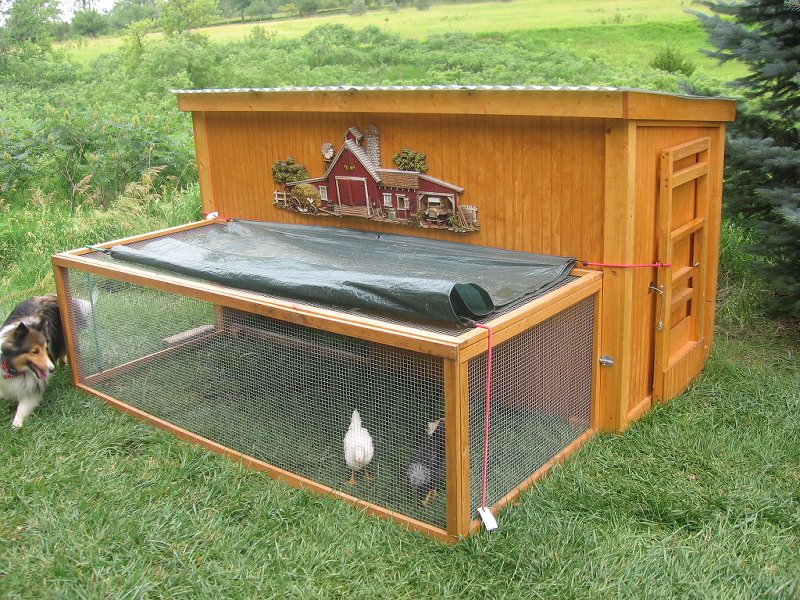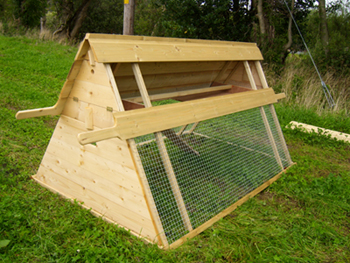If you have to decided to raise chickens for fun or profit and you are short on available space the ideal solution may be the chicken coop tractor. Basically the tractor design is very simple but can take on a variety of different shapes and sizes. The design concept is simple just build a chicken coop without a floor and make it movable.
There are several different options when it comes to the movable part, you can have handles that extend beyond the pen and can be moved by two people. Another option is to copy the wheelbarrow design and place two wheels on the end of the pen with handles on the opposite end so when it is time to move it a single person can accomplish the task by themselves.
So you may be asking yourself why it has to be moved in the first place. Well chickens love to scratch in the grass for food and after a while the area they occupy will become over grazed, not to mention their waste matter will be there as well. However this is not a bad thing because it is a natural rich fertilizer for your yard!
Another reason a chicken coop tractor is a good idea is because if you are just starting out it is a good idea to start small and the tractor design is ideal for small groups of hens. Also you will not have to fear that predators will get to your flock because it is totally enclosed. Raising your chickens with this design is as close as you can get to a free range operation.
The chicken coop tractor design will have all the features of a large hen house with nesting areas and perches so your flock can get up off the ground, because they love to roost at night in a secure place.
As you move your pen around the property the original starting point will have time to recover so you can repeat the process over and over again. The more your flock can forage on their own the less you will need to feed them. So if you are raising hens for profit that could be a huge boost to the bottom line.
Thinking about raising your own chickens for fun or profit? Great idea! Learn how to build your own chicken shelters with a good set of chicken coop plans!
http://www.mysheddesigns.com/coops/










 Raising chickens is a rewarding past-time that can be performed anywhere in the world, no matter what type of environment you live in. You can get a regular supply of fresh eggs that you know won't contain any sort of chemicals or unnatural hormones. Even if you live in an urban environment and had thought that you didn't have the space or the right sort of facilities, chances are good that if you use a small chicken coop you can easily raise chickens of your own.
Raising chickens is a rewarding past-time that can be performed anywhere in the world, no matter what type of environment you live in. You can get a regular supply of fresh eggs that you know won't contain any sort of chemicals or unnatural hormones. Even if you live in an urban environment and had thought that you didn't have the space or the right sort of facilities, chances are good that if you use a small chicken coop you can easily raise chickens of your own.
 Tweet This Post
Tweet This Post